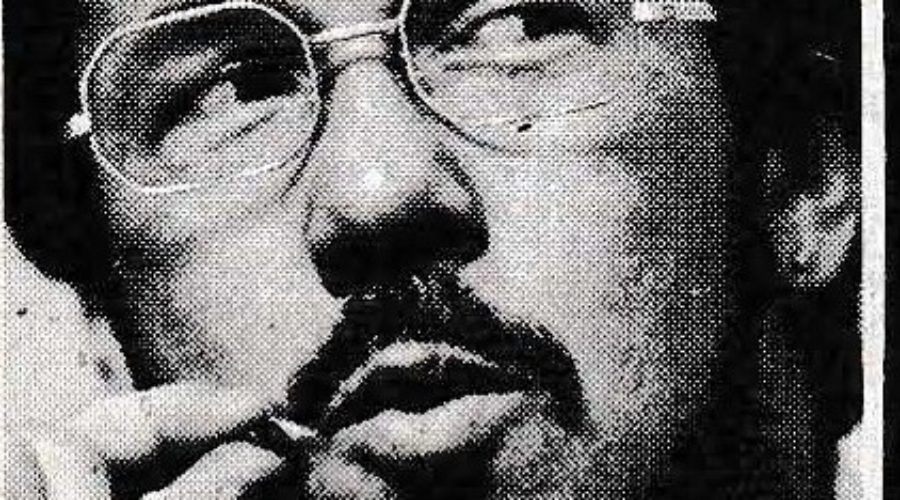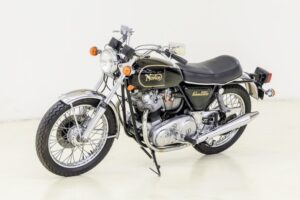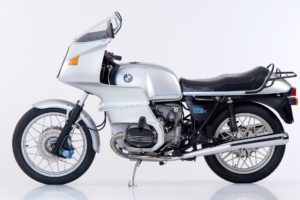Behind Bars: Racing – Proof of What?
Kel Wearne hit Amaroo Park in Sydney and discovered that what makes a bike work well on the open road doesn’t necessarily make it a race winner. And vice versa.
Will-o-the-Wisp letters have always been a good way of gauging the effectiveness of articles we publish. One little TIC one (that’s tongue in cheek) tickled a sensitive spot not so long ago. It was “Why doesn’t the Flying-W road race?”
Well this tag has been there before and among the many fantasies of my existence is such a scene. But the chances of my road racing happening are remote – like it costs bulk folding stuff to do it and there are, at this stage, no handy sponsors jumping out of the Ansett breakfast flights at Tullamarine to invite me back to Sydneytown and a career on the tar.
There is also the problem of facing a totally new environment; one which bears little resemblance to fast highway riding. Road riding is not road racing.
The letter would have gone unmentioned had it not been for a six-week period spent in Sydney which also involved testing the CBX – and more significantly, a day at Amaroo Park with the beasts.
Part of the photographic work with the CBX, Darmah and assorted machines was on at Amaroo. With the chance to get two of the not-then-released Hondas together I took the Honda Australia CBX along. It happened that a number of riders were at the track during the day, including Roger Heyes on a CBX and Warren Willing on an XS Eleven, both testing tyres for Team Avon, while Roy Denison and Geoff Sim were doing it smoothly on a 900 Darmah and 750SS Ducati.
It was one of the more interesting days I’ve spent riding and it taught me quite a bit. It reinforced the ideas I have held for some time that road racing bears little relationship to actual highway riding.
The racetrack is absolute. Absolute precision, absolute judgement, absolute accuracy. And it requires absolute understanding of what the bike will do under adverse racing conditions. There is very little leeway·between going fast and the edge, but it can be approached in intellectual stages.
Highway riding, even at its most intense, cannot approach the fine line of road racing. The factors of traffic (in the same direction as well as the more disturbing opposite direction), unknown conditions around each turn and even changing road surfaces make hard highway riding just as interesting as road racing to me, but certainly it is well below the speeds (in most instances) and the outer limits of racing. Sure you can be on the razor’s edge on the road, but even then it’s tempered by the conditions and the unknown and thus the whole road scene seems far less than ten tenths when it’s transferred to the track.
Road racing has the advantage of offering absolute concentration on a familiar surface (you know the track). conditions are almost predictable and there is no traffic in the opposite direction. It therefore becomes intense in terms of making the most of each turn, each gear change, each braking period. In fact the riding is everything and you’re involved far more with the bike than the surroundings. You have time to learn about what the bike does when pushed and how you react also. It is a real buzz but it is not highway riding. It has a balanced precision and ferocity of purpose that highway blasts cannot match.
The way the Honda behaved on the Amaroo track was, quite naturally, very different from the 2000 km done on the highways. The comparison between the CBX and XS Eleven giants and the lithe Ducati demonstrated that a machine with a greater all-round highway aptitude may suffer in the race results.
The Ducati, with about half the power of the bigger bikes, could lap consistently within a half second of the musclebikes. Yet the average rider will tend to favour the muscle and perhaps never realise that the real motorcycle message would come from the other machine.
In many ways the big machines create problems on the track which are certainly found on the roads. Tyre wear is rapid and the weight makes stopping under adverse conditions tricky; and the combination of power and weight can require a musician’s touch from riders in bad weather on poor highways.
Smaller, lighter and less powerful bikes such as the Ducati do not have the same inherent traits. Therefore they are, over a long period on the highways, a lot less demanding on the rider. Perhaps also more rewarding, but I guess that’s up to individual assessment.
At Amaroo there were none of the bumps and whoopdies, no ‘roos, no hidden sand or mud around corners. But howling wind and the clay and dirt made the Amaroo corners seem about right for some roads. Without hurrying, the four A-graders went from 65s down to 61s, but no-one went under that on the day.
Using the Honda power at around 6000- 8000 (there’s a good 2500 left) and staying in a higher gear, high 61s came my way. First time on the track and I thought it was neat. Not only can you ride hard; you don’t have to spend $2 on a hotwash machine to clean the bike on the way home! I think I could like road-racing.
Interstate running is not road-racing. It is highway tripping and it offers a greater degree of round-table riding experience. The CBX performed well on tour, on tripping and around the city. And hooning? It proved diabolically simple to pull up on long monowheels. But it turned into a 160 km/h marshmallow at times at Amaroo – the same as the XS Eleven (not just my comments).
It also ran out of brakes and threatened to finish off the already well-used rear Metzeler tyre within a couple of hours. The Ducati was obviously slower in sheer acceleration but it was far easier to ride. Not “just squirt between corners” so to speak. It stopped shorter and better-controlled than the others and the suspension was better for sports riding and racing (although that may just be the fact of less weight and longer wheelbase – not superior design!)
I think any competent rider with sound judgement could lap consistently on any of the bikes: Yamaha, CBX, Ducati or whatever. But the art of racing lies in doing it beyond the razor’s edge, and in showing form like the 59 seconds of Hailwood on a 750 Ducati at the Six-Hour.
In terms of what a bike does, racing is totally off the highway scene. Very few of us, very few of any of the riders in the country, have the skills which make great riders like Crosby, and the riders who lead the production racing here and elsewhere add a dimension few of us can understand. They can, and do, control some of the meanest production machines ever built along a tightrope of traps.
So for Joe Cool-turned-racer finding out you want to be macho is one thing, getting the bike is another and then trying to live with it all can be the big trip. Yes, I can’t help thinking that bikes like the Ducati will not make the limelight and that will mean many potential owners will never get to enjoy what it offers.
Unlike the road, the racetrack will never prove just how good the different bikes are – it will show only the best riders.
By Kel Wearne, Two Wheels, January 1979




